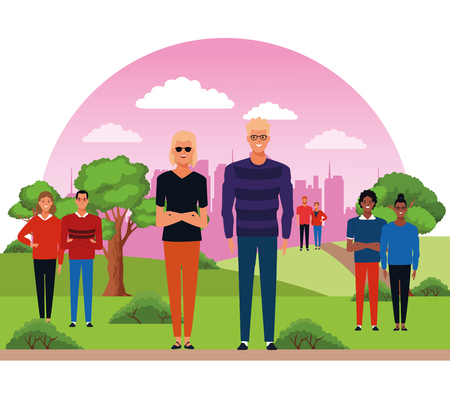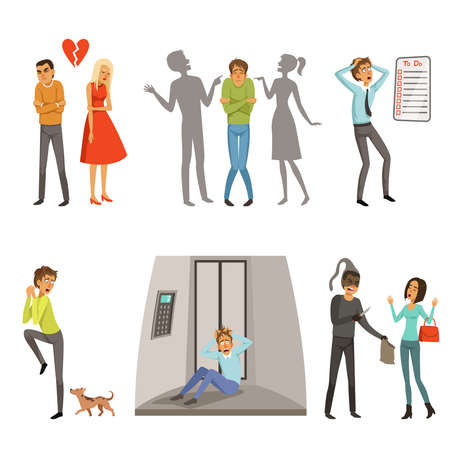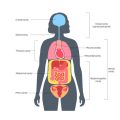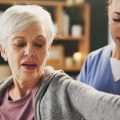Understanding Stroke Rehabilitation in the UK
Stroke rehabilitation in the UK is a highly structured process, overseen primarily by the NHS and tailored to address both immediate and long-term needs of survivors. The typical pathway begins with acute care in hospital stroke units, followed by a transition to community-based services or specialised rehabilitation centres. Throughout these stages, patients encounter several common challenges such as delays in access to services, variations in local resources, and gaps in continuity as they move between care settings. A distinctive aspect of British stroke rehabilitation is the central role played by multidisciplinary teams—comprising physiotherapists, occupational therapists, speech and language therapists, nurses, psychologists, and social workers. These professionals collaborate closely to develop holistic recovery plans that address not just physical deficits but also cognitive, emotional, and social well-being. This integrated approach is essential for promoting independence and improving quality of life for stroke survivors across the UK.
2. The Importance of Personalisation in Rehab Plans
When it comes to stroke rehabilitation, a one-size-fits-all approach simply doesn’t cut it. In the UK, we take pride in our commitment to patient-centred care, and this principle is especially vital when developing rehabilitation plans for stroke survivors. Every person’s journey through recovery is unique, shaped by their individual goals, cultural background, pre-existing health conditions, and social circumstances. By putting personalisation at the heart of rehab planning, clinicians not only address medical needs but also foster motivation and engagement—key drivers of positive outcomes.
Why Tailored Approaches Matter
Personalised rehabilitation recognises that each patient’s life before their stroke was different, and so are their aspirations after it. For some, regaining the ability to walk unaided might be paramount; for others, returning to work or participating in community activities could be the main focus. By discussing these personal objectives from the outset, therapists can craft meaningful goals that matter to the individual rather than relying on generic milestones.
Key Factors in Personalising Rehabilitation
| Factor | Considerations |
|---|---|
| Individual Goals | What does the patient want to achieve? (e.g., independence, mobility, speech) |
| Background & Culture | Cultural beliefs, family support systems, language preferences |
| Health Status | Pre-existing conditions, medication needs, cognitive abilities |
| Social Circumstances | Living situation, access to community resources, financial factors |
The British Context
In the British healthcare setting—whether you’re under the NHS or accessing private services—there is increasing recognition of the role that personal circumstances play in recovery. For example, a patient living in a remote village might need different interventions compared to someone based in central London with easy access to support groups and public transport. By considering these variables early on, therapists can recommend realistic and effective strategies that fit seamlessly into each person’s daily routine.
This personalised approach isn’t just about ticking boxes; it’s about seeing patients as whole people rather than just cases. Ultimately, tailored rehabilitation plans pave the way for more meaningful progress and help individuals regain their sense of self after a life-changing event like a stroke.

3. Assessment Tools and Approaches
When it comes to developing truly personalised rehabilitation plans for stroke patients in the UK, a thorough assessment is the essential starting point. British clinicians rely on a combination of validated tools and holistic approaches to capture the full picture of a patient’s strengths, challenges, and aspirations. The National Health Service (NHS) emphasises a multidisciplinary assessment, with input from physiotherapists, occupational therapists, speech and language therapists, and clinical psychologists.
Among the most widely used tools is the National Institutes of Health Stroke Scale (NIHSS), which provides an objective measure of stroke severity. For functional assessments, the Barthel Index is frequently used across UK hospitals and community settings to evaluate activities of daily living such as mobility and personal care. The Modified Rankin Scale (mRS) is another staple, helping teams gauge overall disability and track progress over time.
Beyond these standard measures, more specific British assessments are employed depending on individual needs. For cognitive and communication issues, the Sheffield Screening Test for Acquired Language Disorders or the Cognitive Examination (ACE-III) are routinely used. Occupational therapists may use the Nottingham Extended Activities of Daily Living (NEADL) Scale to assess how stroke affects complex daily tasks at home.
The British approach values not only clinical data but also the patient’s own story. Clinicians often use structured interviews and goal-setting tools such as GAS (Goal Attainment Scaling), encouraging patients and families to express their priorities—from regaining independence in walking to returning to cherished hobbies. This blend of standardised assessment tools with personal narratives ensures that rehabilitation plans are both evidence-based and meaningful to each individual’s life context.
Navigating this comprehensive assessment process requires experience and empathy. In my practice, I’ve seen how taking time for detailed evaluation—rather than rushing into generic exercises—lays a stronger foundation for recovery. By investing in robust assessment upfront, British stroke teams can craft bespoke interventions that genuinely empower survivors on their unique paths forward.
4. Co-production: Working with Patients and Families
One of the cornerstones of developing truly personalised rehabilitation plans for stroke patients in the UK is co-production—actively involving patients and their families in every step of the journey. This approach recognises that each individual’s experience of stroke is unique, and their personal goals, values, and social circumstances should shape the direction of their recovery.
In British healthcare settings, collaborative goal-setting is not just a buzzword; it’s a practical necessity. By engaging both patients and their loved ones in meaningful conversations about what matters most to them, clinicians can design interventions that are more relevant, motivating, and sustainable. Here’s how this process typically unfolds:
| Stage | Patient & Family Role | Clinician Role |
|---|---|---|
| Initial Assessment | Share experiences, concerns, and aspirations for recovery | Listen actively, gather holistic information, explain options |
| Goal-Setting | Identify priorities—such as returning to work or regaining independence at home | Facilitate discussion, provide realistic advice on potential outcomes |
| Decision-Making | Take part in choosing therapies and setting timelines | Present evidence-based choices and adapt recommendations to fit personal context |
| Review & Feedback | Offer feedback on what works and what doesn’t, suggest adjustments | Monitor progress, encourage open dialogue, revise plans accordingly |
This spirit of partnership extends beyond clinical walls. Many British families find that being involved gives them a sense of agency during an otherwise disempowering time. It helps foster trust between all parties and ensures the rehabilitation plan respects cultural preferences and practical realities—from transport logistics to dietary requirements.
The value is clear: when patients and their loved ones feel listened to and empowered, they’re more likely to engage fully with their rehabilitation plan. Outcomes improve not just clinically but emotionally as well; hope and motivation are powerful drivers of recovery. Ultimately, co-production isn’t just good practice—it’s a vital component of compassionate, effective stroke care across the UK.
5. Incorporating British Community Resources
One of the most powerful aspects of stroke rehabilitation in the UK lies in tapping into the wealth of local community resources and support networks that are uniquely British. Personalised recovery doesn’t just happen within hospital walls or through home-based exercises; it flourishes when patients are connected to the wider community, drawing on both formal services and informal social support. Understanding the landscape of these resources—and how best to integrate them—can make a tangible difference in long-term outcomes.
Community-Based Support Networks
The British approach places a strong emphasis on community involvement. Local stroke clubs, peer support groups, and befriending schemes offer safe spaces where survivors can share experiences, swap practical tips, and boost each other’s confidence. For many, simply having a cuppa and chat with someone who truly understands is a lifeline. GPs and rehabilitation teams often encourage participation in these networks early on, as social engagement is closely linked to improved mental health and motivation.
Local Services: Bridging Health and Social Care
Across the UK, local authorities and NHS trusts work hand-in-hand to deliver a range of services designed to ease the transition from hospital to home. This might include community physiotherapy sessions at local leisure centres, occupational therapy visits at home, or speech therapy at dedicated clinics. Many areas also run mobility training classes or exercise groups specifically for stroke survivors. Importantly, British councils can provide adaptations (like grab rails or stairlifts) or arrange for carers—making day-to-day life more manageable and supporting ongoing independence.
The Role of Charities: The Stroke Association and Beyond
No discussion about post-stroke rehabilitation in Britain would be complete without mentioning the invaluable role of charities like the Stroke Association. These organisations offer tailored information packs, helplines staffed by experts, and even emotional support services for both patients and families. Their volunteer-led support groups are dotted around the country, often acting as hubs for advice on benefits, housing adaptations, or returning to work. Beyond this, charities frequently campaign for better public awareness and champion improvements in local care provision—helping ensure every stroke survivor has access to the resources they need for their unique journey.
Incorporating these British community resources into personalised rehabilitation plans isn’t just about ticking boxes—it’s about fostering a sense of belonging, empowerment, and hope that goes far beyond medical intervention alone.
6. Addressing Barriers and Inequality
When developing personalised rehabilitation plans for stroke patients within the UK, it is vital to recognise and actively address the barriers and inequalities that persist across different communities. The social determinants of health—such as income, education, housing stability, and access to transport—can significantly influence both the risk of stroke and the effectiveness of rehabilitation. For example, individuals from lower socio-economic backgrounds may struggle to attend regular physiotherapy sessions due to travel costs or caring responsibilities at home.
Recognising Regional Disparities
Across Britain, there are notable regional disparities in healthcare provision. Patients in rural areas might face longer waiting times or have fewer specialist services available locally compared to those living in cities. As practitioners, acknowledging these differences is the first step toward advocating for fairer resource allocation and exploring alternative solutions such as tele-rehabilitation or community-based support groups.
Practical Strategies for Inclusion
Making rehabilitation more inclusive requires proactive engagement with patients and their families. This could mean offering flexible appointment times, working closely with local charities, or providing guidance on financial support schemes like Personal Independence Payment (PIP). Additionally, involving multidisciplinary teams—including occupational therapists, speech and language therapists, and social workers—ensures that each patient’s unique circumstances are considered when crafting their recovery plan.
Cultural Sensitivity and Empowerment
It’s also crucial to respect cultural diversity within British society. Effective communication—using plain English or providing interpreters where necessary—helps build trust and ensures everyone feels empowered to participate in their own recovery journey. By embedding equality into every stage of the rehabilitation process, we not only improve outcomes for stroke survivors but also contribute to a more just and compassionate health system across the UK.
7. Looking Forward: Innovations and Future Directions
The landscape of stroke rehabilitation in the UK is experiencing rapid transformation, driven by technological advancements, cutting-edge research, and new models of care. As we look to the future, there is a tangible sense of optimism about how these innovations will enable us to provide even more personalised and effective support for stroke survivors across Britain.
Embracing Technology in Rehabilitation
One of the most exciting developments is the increasing integration of digital health technologies into personalised rehabilitation plans. Virtual reality (VR) platforms are now being used in some NHS trusts to simulate real-life scenarios, allowing patients to practise mobility and cognitive skills in a controlled environment. Similarly, wearable devices are enabling therapists to remotely monitor patients progress, providing real-time feedback that informs ongoing adjustments to their care.
Artificial Intelligence and Data-Driven Care
Artificial intelligence (AI) is another game-changer. AI-driven assessment tools can analyse large datasets to predict recovery patterns, helping clinicians tailor interventions with greater precision than ever before. In the UK, pilot projects are underway where AI supports decision-making within multidisciplinary teams, enhancing both efficiency and outcomes.
Expanding Research Horizons
British universities and research institutions continue to lead the way in stroke rehabilitation studies. Recent trials have explored everything from tele-rehabilitation solutions—which allow rural or housebound patients access to specialist therapies—to genetic profiling that may one day inform bespoke treatment protocols. The collaborative spirit between academia, the NHS, and patient organisations ensures that new evidence rapidly translates into everyday practice.
New Models of Care: Integrated and Community-Based Approaches
The shift towards integrated care systems within the NHS is another promising development. By bringing together primary care providers, hospitals, social services, and voluntary organisations, these models offer a holistic approach that addresses not just medical needs but also emotional wellbeing and social reintegration—crucial elements for meaningful recovery.
A Patient-Centred Vision for Tomorrow
Ultimately, the future of personalised rehabilitation for stroke patients in the UK lies in continued innovation coupled with an unwavering commitment to person-centred care. As technology evolves and our understanding deepens, we must ensure that every advancement is grounded in empathy and respect for individual journeys. By staying open to new possibilities while championing the lived experiences of British stroke survivors, we can look forward to a future where every patient receives truly bespoke support on their path to recovery.


